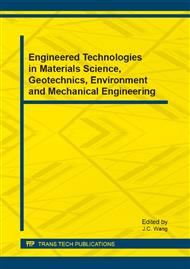p.101
p.107
p.112
p.117
p.124
p.129
p.133
p.139
p.145
Experimental Study on Low Temperature Mechanical Properties of HTPB Propellant
Abstract:
In order to investigate low temperature mechanical characteristics of HTPB (hydroxy-terminated polybutadiene binder) propellant, uniaxial tensile tests at both the low temperature and room temperature after short storage at low temperature were conducted and SEM (scanning electron microscopy) was used to observe fracture surfaces. The mechanical properties and stress-strain curves were obtained. The experimental results show that matrix tearing and particle brittle fracture occur in low temperature tensile test, but only particle/matrix interface de-wetting in room temperature tensile test. Low temperature stress-strain curves of propellant appear obviously yield region, and the yield degree is involved to the low temperature value. The low temperature mechanical properties such as maximum tensile stress, elastic modulus and strain at maximum stress against temperature are different from room temperature mechanical properties.
Info:
Periodical:
Pages:
124-128
Citation:
Online since:
February 2013
Authors:
Keywords:
Price:
Сopyright:
© 2013 Trans Tech Publications Ltd. All Rights Reserved
Share:
Citation:


